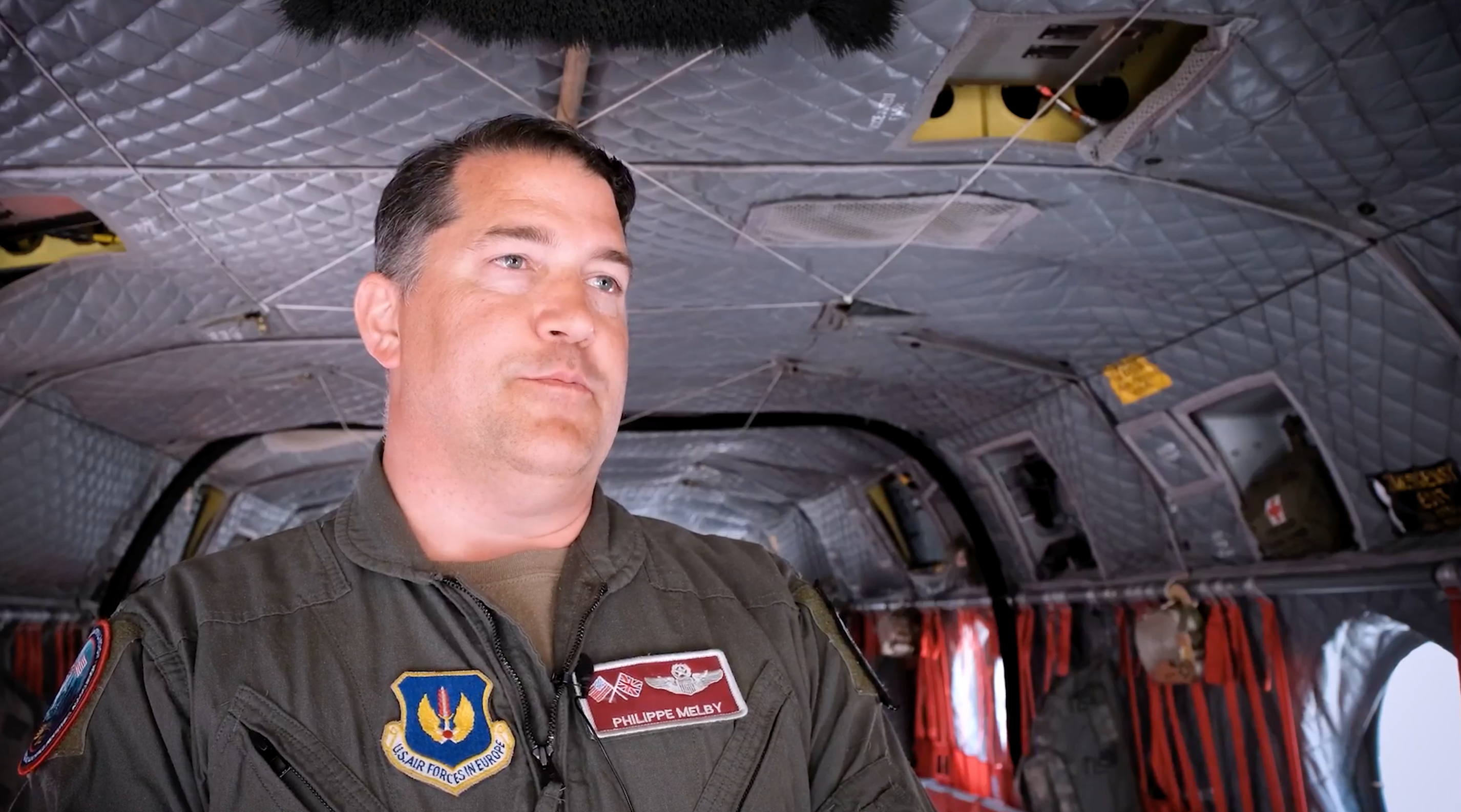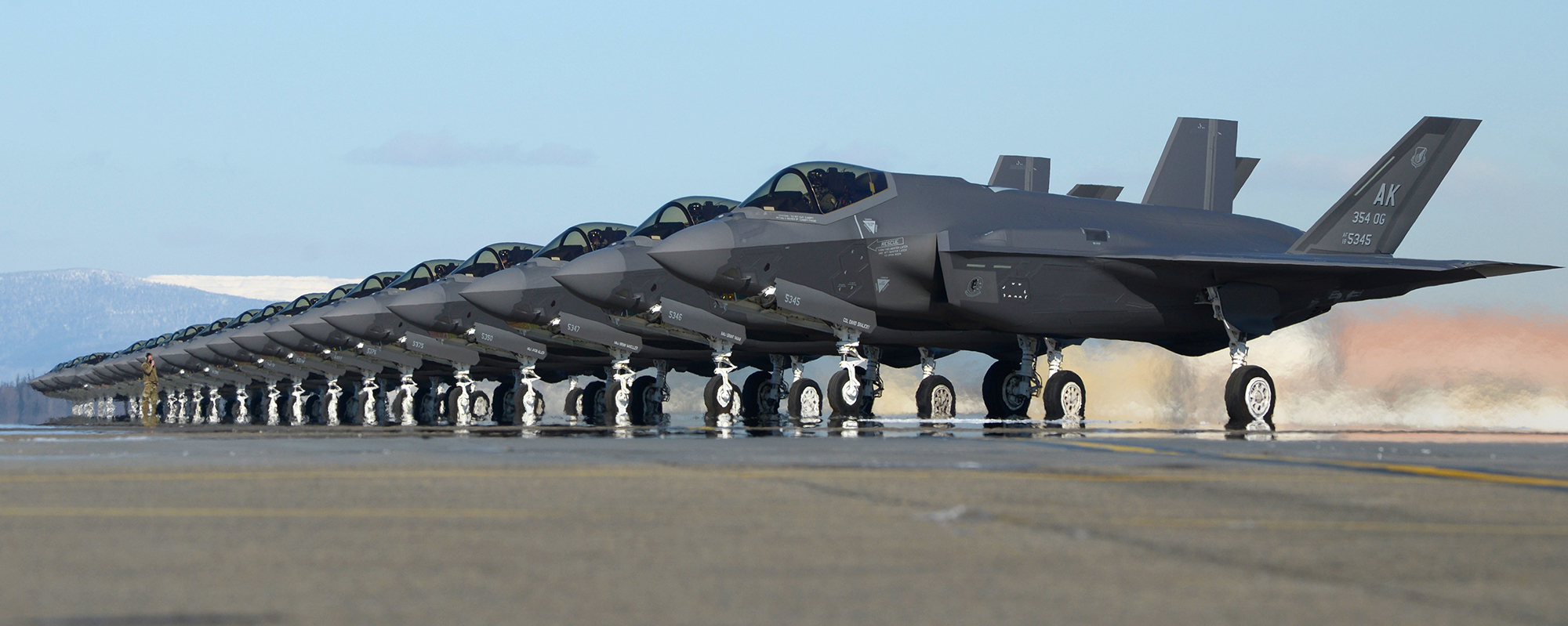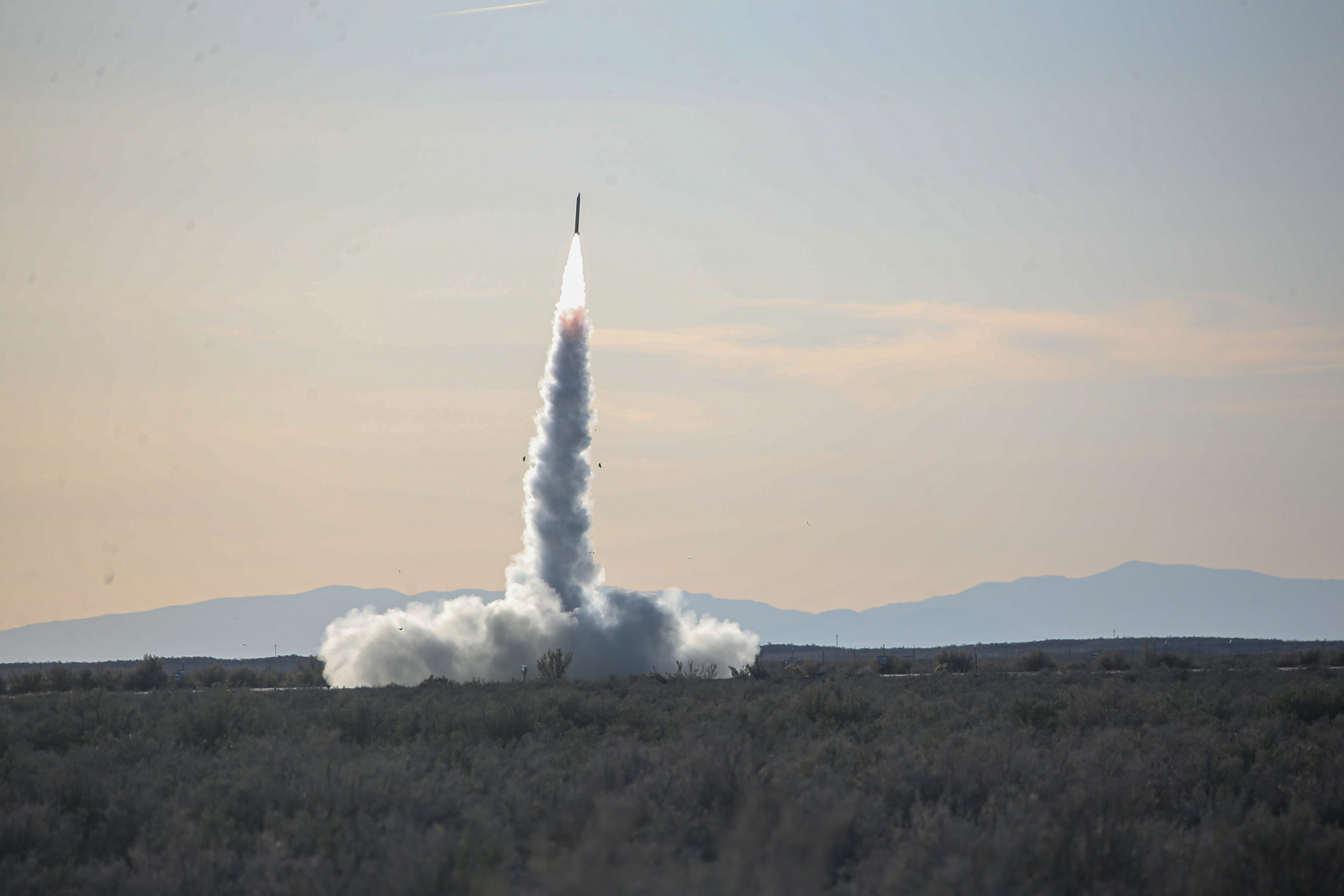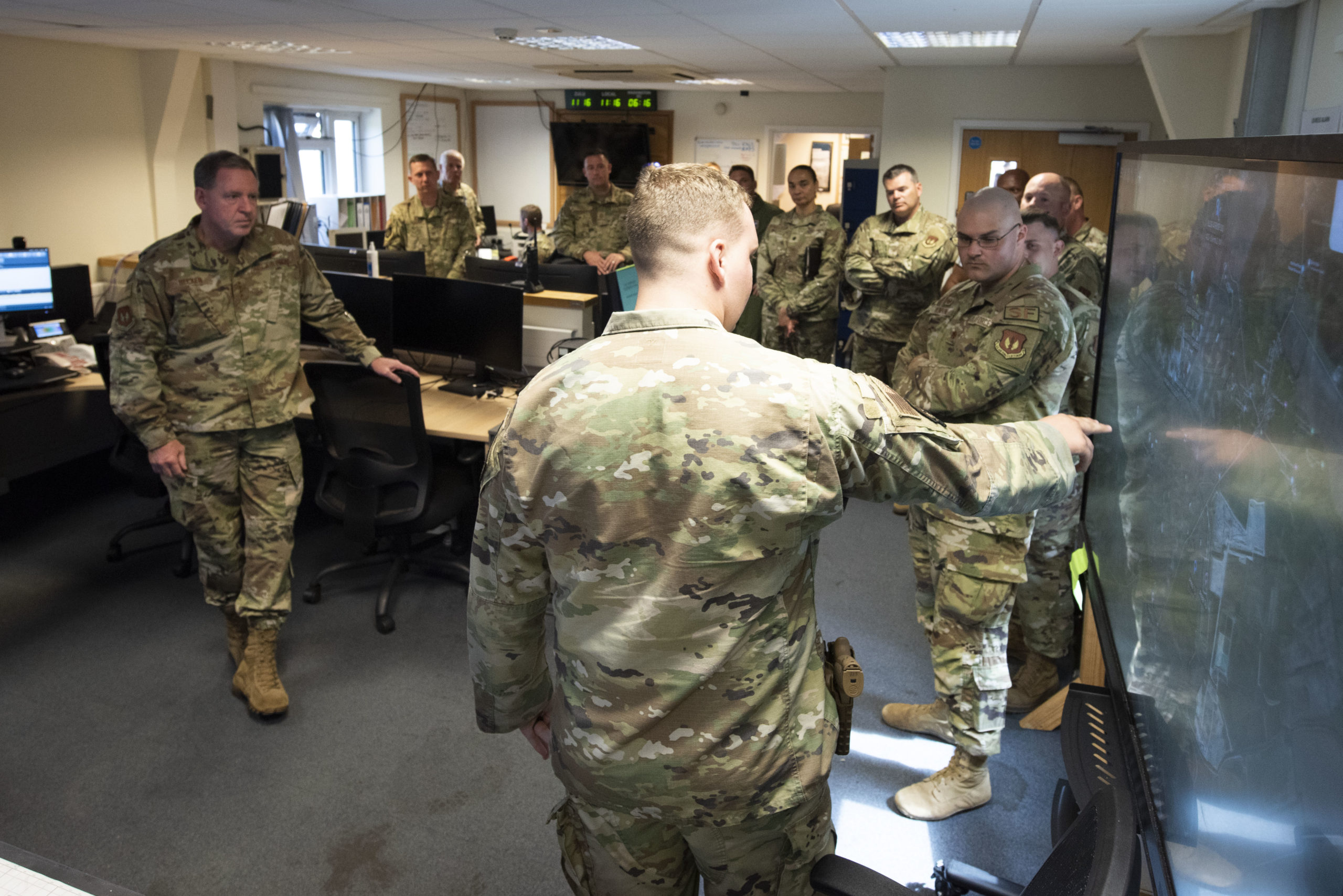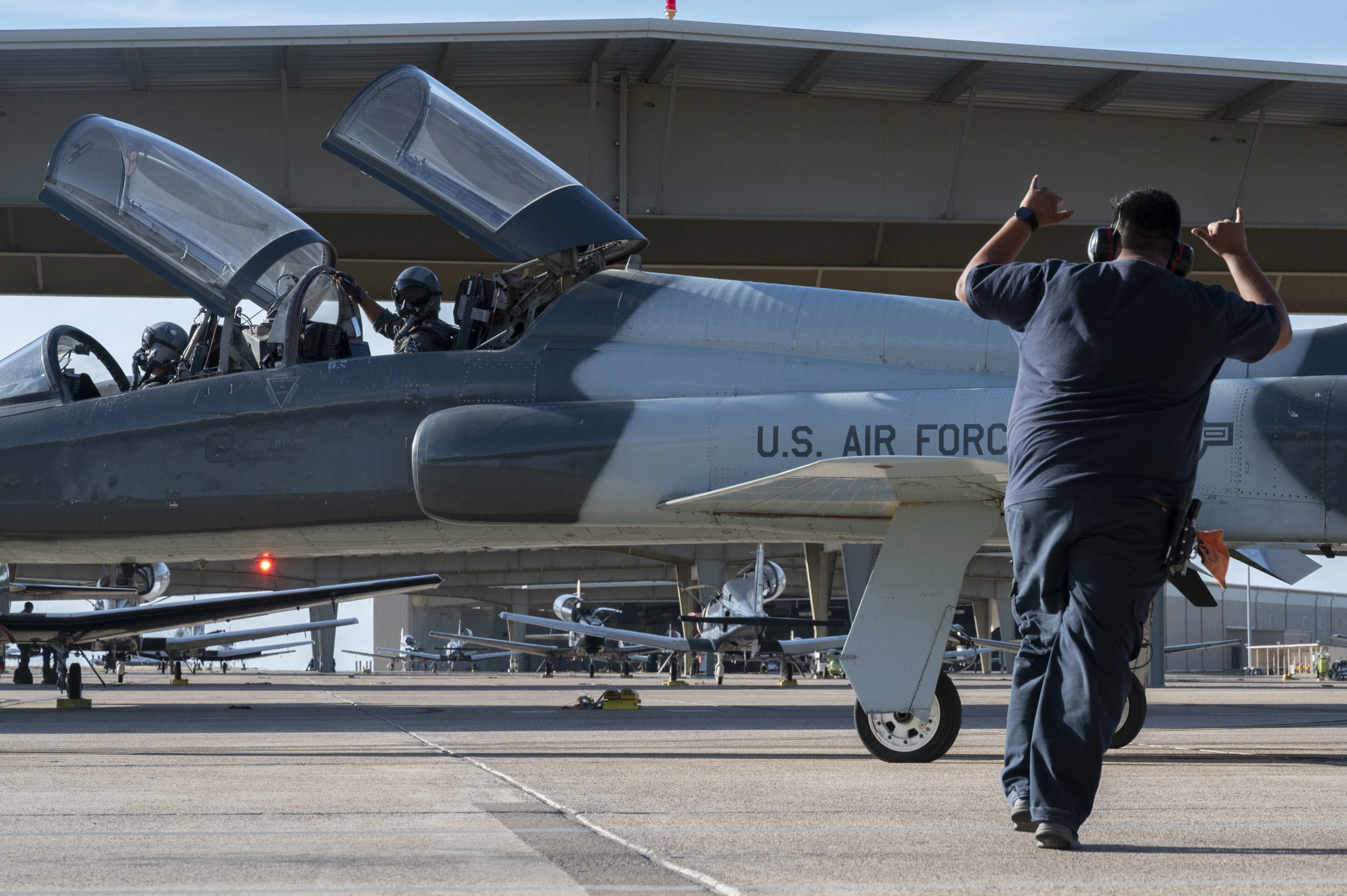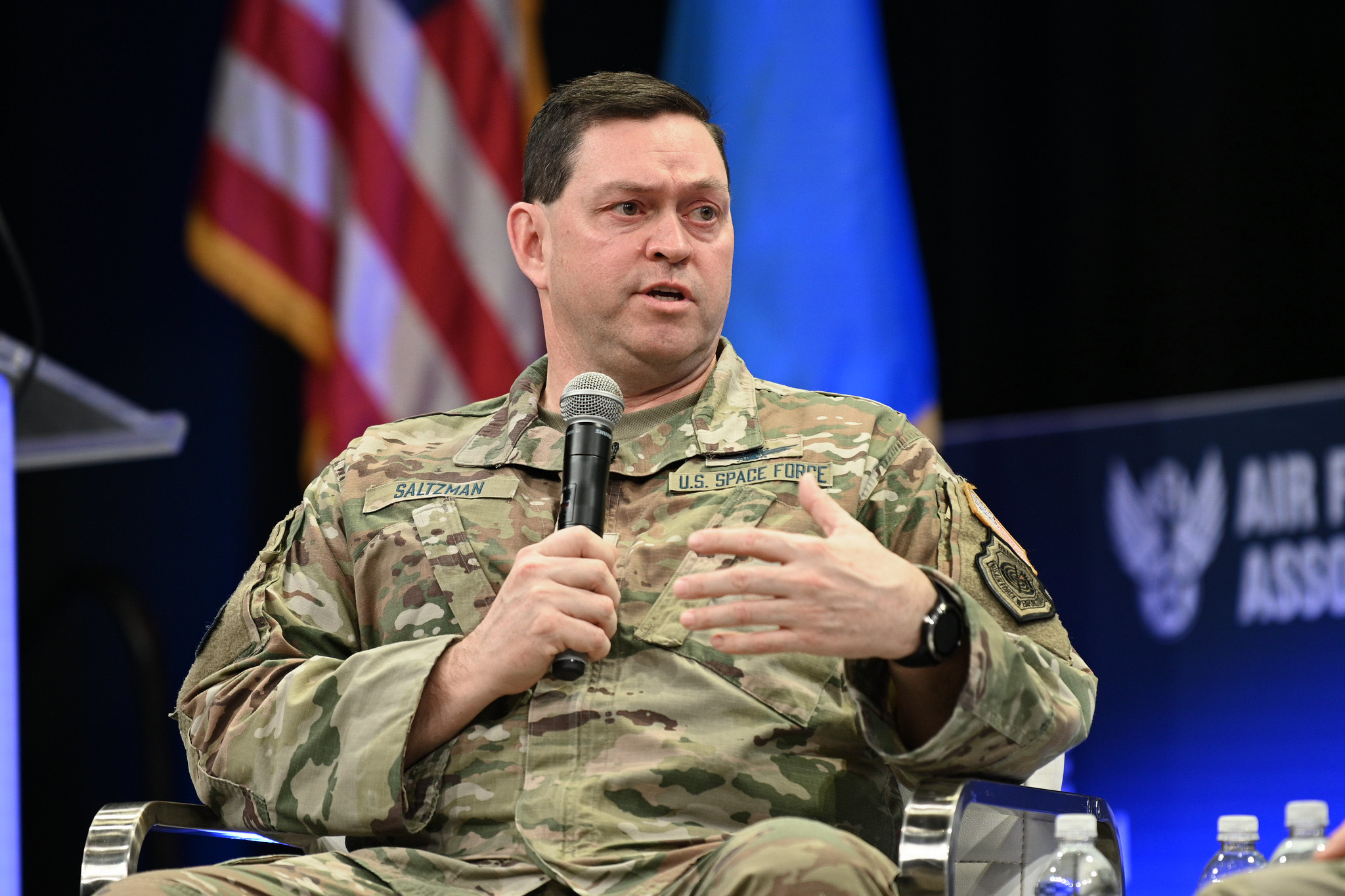FARNBOROUGH, U.K.—As tens of thousands of visitors entered the Farnborough International Airshow near London, an array of American aircraft stood just a couple hundred feet from the gate.
Front and center at the July airshow stood a trio of fighter jets—an F-15E Strike Eagle, an F-16 Fighting Falcon, and an F-35 Lightning II. Behind them were an Air National Guard C-130H, a Navy P-8A, and Army helicopters such as the AH-64D Apache Longbow and CH-47F Chinook.
The effort it took to assemble those aircraft, to support and provide for their crews, and to place and arrange them just so, began more than half a year prior.
“We started the planning about six months ago,” Lt. Col. Phillippe Melby, deputy commander of the 100th Operations Group at RAF Mildenhall and the Pentagon’s “airboss” for the show, told Air Force Magazine in an interview from his base a couple hours’ drive from Farnborough. “That’s when [Defense Security Cooperation Agency] released the list of assets they wanted to participate in shows. So planning actually did start earlier in Washington, D.C. I wasn’t really privy to what was happening behind the scenes there, but it’s been going on for a long time.”
As airboss, Melby’s job description, along with that of his deputy, Lt. Col. Andre Walton, covered an expansive range of duties.
“You probably associate an airboss as someone in the tower directing traffic, directing the timing, and the main safety observer,” Melby said. “So it’s a little bit different than that. … The airboss in a trade show is pretty much responsible for all the DOD participants to make sure they’re getting what they need, in a nutshell.”

Those responsibilities included ensuring that all the Airmen, Sailors, and Soliders who attended the airshow were informed of the schedule, got food, and had lodgings. But beyond that, Melby also had to consider the larger goals the Pentagon had in attending the show and displaying its aircraft in the first place.
“It was a huge emphasis for the government to emphasize our special relationship with the U.K., to also showcase our NATO partners, and also all the services within USAFE and within the DOD itself,” Melby said. “So the planning takes a long time really to figure out, ‘What is the message we’re trying to say with this trade show? And then with industry, what are the things that we’re really trying to push for—that we know that we want to improve interoperability with NATO partners—what are the assets that we think should be the focus?’ But again, as the airboss, I’m not part of that decision-making.”
While Melby didn’t make that decision, he was tasked with carrying it out on the ground, down to the way the planes were arranged.
“The government really wanted to emphasize that we’re going to place a lot of assets on the ground in a static display role, even though a lot of things are happening at the same time,” Melby said. Access to DOD’s “corral” display was by invitation only. “But to show within that corral all the different services that were represented, the message is really: Stronger together. So with all the different services together, when we work together, we’re stronger together.”
That message of interoperability has taken on renewed urgency with Russia’s invasion of Ukraine—but for Melby, the task of getting the aircraft in place presented other, more logistical challenges.
“We had already been on site surveys—there had been two site surveys before the show even started. So we knew where we were going to be placed,” Melby said. “But then that Friday [before the show started], that first day when assets started arriving, we’re working with the show organizers, because they have a big say in where assets go, so we have to work closely with them to make sure where they want assets works with how we want the assets to be placed, taking in mind security, taking in mind which aircraft we want to be next to, what other countries do we want to be nearby.”
Indeed, even where the U.S.’s display is in relation to other nations can be a “big factor that goes into planning,” Melby said.
Throughout the week, Melby and his team worked to accommodate a steady stream of visitors through the U.S. corral, including Air Force Secretary Frank Kendall, NASA administrator Bill Nelson, U.S. ambassador to the U.K. Jane Hartley, and Sen. Jerry Moran (R-Kan.), among others.
And when it came time to pack up and leave at the end of the week, the slightly chaotic process of arriving reversed itself.
“People have to get out of town based on when their airfields close,” Melby said. “So you have to get a slot time with the organizers, because there’s a lot of other traffic leaving at the same time. … So you’re adapting. You’re changing plans. You’re just adjusting every aspect of moving out and then keeping in mind security, keeping in mind the personnel. Some people have a hard time to get out of there because they have follow-on missions that they have to get to.”
All in all, thousands of visitors made their way to the U.S. corral over the course of the week, and Melby praised his team and the personnel in attendance for their professionalism. And when it was all over, after months of planning, he arrived back at Mildenhall that weekend to get a little down time.
“This was quite a big commitment, and it did take me away from my day job,” Melby acknowledged.
Yet it was a job he relished. While serving in the Pacific Air Forces several years ago as part of the aerial events and exercises planning team, he served as a deputy airboss for six airshows in the region. Getting the chance to be the principal airboss for the first time, he leapt at the opportunity for a simple reason.
“I’ve loved airplanes since I was a kid. So everything about watching airplanes fly, being at airshows, seeing the demos go—I stop and watch planes fly whenever I see them. It doesn’t matter what it is,” Melby said. “And so I just love all aspects of aviation [and] being able to go to these shows, talk to people about airplanes.”
Whether Melby will return as an airboss for a future show remains to be seen. He has been selected for promotion to colonel, and demands on his time are likely to increase. But even if Farnborough winds up being his only one, it was worth it.
“It’s a lot of planning; it’s a lot of work; but it’s very rewarding,” Melby said. “It’s very fun to do.”
